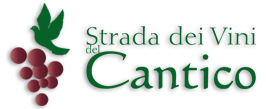Comune di Deruta
Description:
Deruta, the Town of the People’s Art
A long silence envelops the history of Deruta at least until the year 1040, when the name appears for the first time in the documents of the Abbey of Farfa in Sabina. One may think, therefore, of a great historical shipwreck, with the only thing surviving being an ominously significant name: Deruta (Latin diruta, “ruined”). The origin of the name appears to be connected with the fleeing of the Perugians in 40 B.C. from their city which had been destroyed and their settling on this hill, which took the name of “Perugia vecchia” (“Old Perugia”), a name still used today for a hill above Deruta. The homophony of the word “ruta” must have sparked the imagination of the people of Deruta, who chose the ruta (rue) as their emblem, as can be seen in the town’s coat of arms, where a rue plant is on top of the crenellated tower, alongside the crowned griffin of Perugia.
The earliest settlements in Deruta were favored by the ready availability of clay found in great quantities in the Deruta hills and in the alluvial deposits of the Tevere River; the town’s favorable geographical position, due to its proximity to major roads, fostered the development of the potters’ work and their trade.
A considerable number of archival documents and ceramic works testify to how ceramics have been produced in Deruta uninterruptedly from the Middle Ages until today; the evidence forms a picture of Deruta taking shape, especially in the 15th and 16th centuries, and again in the 20th century, as an extraordinary phenomenon of a mono economy based on the production of pottery. This continuity means that, in the stylistic and technical evolution of Deruta pottery, one recognizes all the milestones achieved also by the other pottery towns of central and northern Italy, often with important breakthroughs and original solutions, such as in the case of the Renaissance lusterware. This is due to Deruta’s role as a crossroads from the 14th to the 16th century, when various artistic developments were amalgamated in a fruitful sharing of ideas and experiences. The migration of master potters to and from Deruta was in fact a phenomenon that affected the town early on and that would remain constant until recent times. It also explains the contaminations and original designs that have distinguished the art of Deruta for centuries. During the Renaissance, the domination of the market, the artistic awareness and the technical mastery of the Deruta potters have made ceramics an art that bestowed great prestige on those who practice it.
A village of potters
Everything, in Deruta, tells about the art of ceramics.
Visiting Deruta means immersing oneself in a centuries-old tradition; the remains of the old pottery kilns (during the Renaissance a good 52 kilns, located in the old town, were actively being used) tell of an extraordinarily well-organized production and a strong stimulus toward innovation. The antique pottery that has been found reveals innovative – sometimes revolutionary – techniques and styles, while maintaining elements of continuity: a sort of “memorial” of the potter, which boldly incorporates originality and modernity. The precious museum collections show the profound artistic awareness and pride of the masters of Deruta majolica.
The artisans of today still have all the technical skill, dignity and pride of their forefathers. Firmly anchored to tradition, they nonetheless are able to seek new goals, inspired by the great works in the Ceramics Museum, the “Art Museum for Majolica Workers” as it was originally called, with an eye to progress and contemporary tastes. Shop and home are still the basic, characteristic aspects of life in Deruta, and every ceramic workshop speaks of that “people’s art”, of that talent that has made Deruta famous throughout the world, the fascination of the secret techniques that have been handed down for generations.
Do not miss
- The Museo Regionale della Ceramica (Pottery Museum) and the Pinacoteca Comunale
- The archeological area of the San Salvatore kilns inside the Museo Regionale della Ceramica
- The experience of a pottery decoration workshop for children and adults in the setting of the Museo della Ceramica
- The specialized library at the Museo Regionale della Ceramica
- The Church of San Francesco
- The Church of Sant’Antonio Abate
- A tour of the old kilns in the historic center
- The Alviero Moretti Contemporary Artistic Ceramics Foundation
- Ubaldo Grazia Maioliche Pottery Museum
- A tour of the small workshops and the large majolica potteries, guided by master artisans, to experience the pottery-making process
- The Madonna del Bagno Sanctuary
- A stop at the restaurants and taverns to enjoy the Umbrian cuisine
- The Galleria di Storia Naturale and the Laboratorio di Storia dell’Agricoltura in Casalina
- The Museo di Anatomia Umana and the Galleria di Matematica in Casalina
Map:
Enlarged view of the map / Road directions
How to find us:
Comune di Deruta
- Address: Piazza dei Consoli 15 - 06053 - Deruta (PG)
- Phone: +39 075 972861
- Fax: +39 075 9728639
- E-mail: protocollo@comunederuta.gov.it
- Web Site: www.comunederuta.gov.it
- We speak:
-
More Information:




.jpg)
.JPG)
.jpg)
.jpg)
.JPG)
.jpg)

















